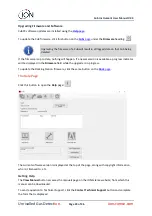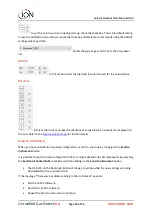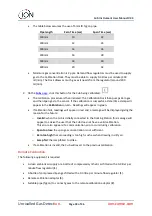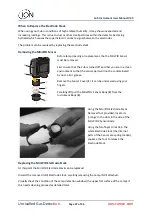
Cub Instrument User Manual V2.4
Unrivalled Gas Detect
ion.
Page 37 of 46
ionscience.com
When to Replace the Electrode Stack
When using your Cub in conditions of high ambient humidity, it may show unexpected and
increasing readings. This is due to dust or other small particles within the detector becoming
hydrated which causes these particles to conduct a signal between the electrodes.
The problem can be resolved by replacing the electrode stack.
Removing the MiniPID Sensor
Before lamp cleaning or replacement, the the MiniPID Sensor
must be removed.
First ensure that the Cub is turned off and that you are in a clean
environment so that the sensor parts will not be contaminated
by dust, oil or grease.
Remove the Sensor Cover (
1
). It can be unscrewed using your
fingers.
Carefully lift/pull the MiniPID 2 Sensor Body (
4
) from the
Instrument Body (
6
).
Using the Mini PID Electrode Stack
Removal Tool provided, locate its
‘prongs’ in the slots in the sid
e of the
Mini PID 2 Sensor Body.
Using the forefinger to restrain the
white Electrode Stack (the internal
parts of the Sensor are spring-loaded),
squeeze the Tool to release the
Electrode Stack.
Replacing the MiniPID Electrode Stack
At this point the MiniPID Electrode Stack can be replaced.
Discard the removed (old) Electrode Stack, carefully removing the Lamp if still attached.
Visually check the condition of the Lamp detection window (the upper flat surface of the Lamp). If
this needs cleaning proceed as detailed later.










































